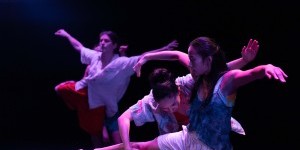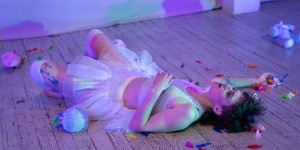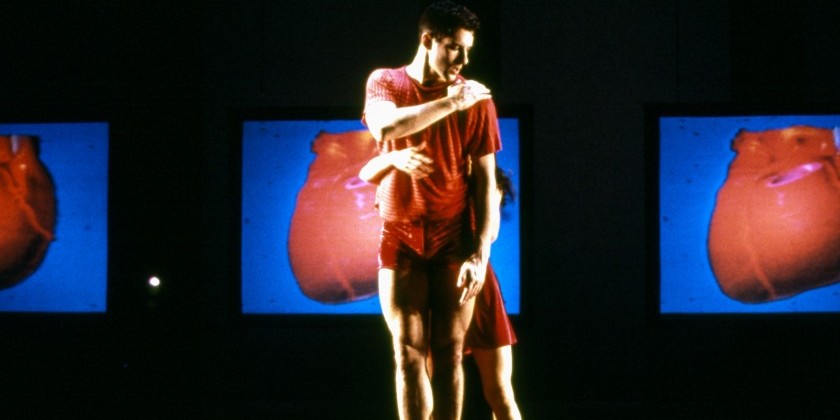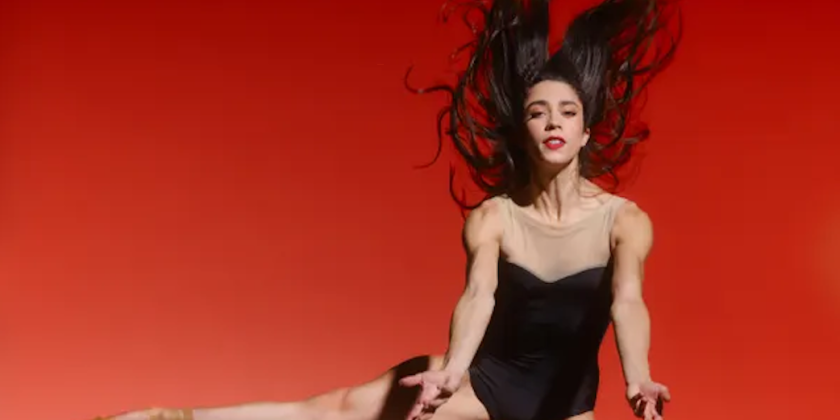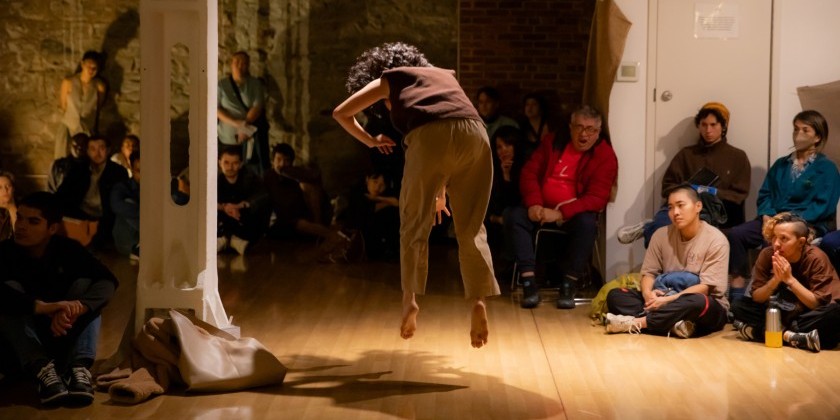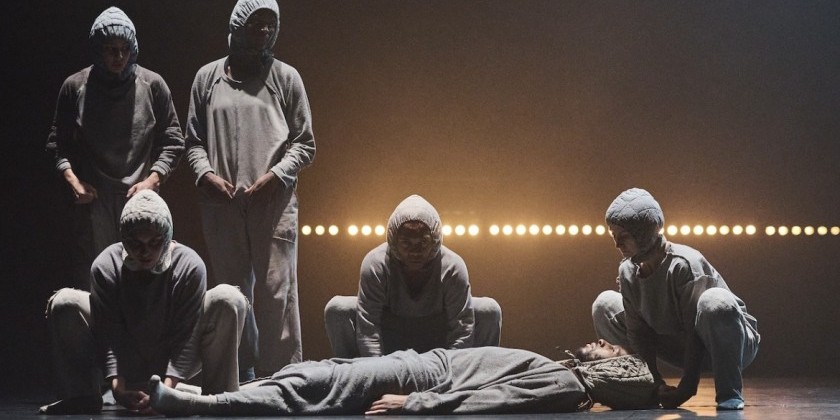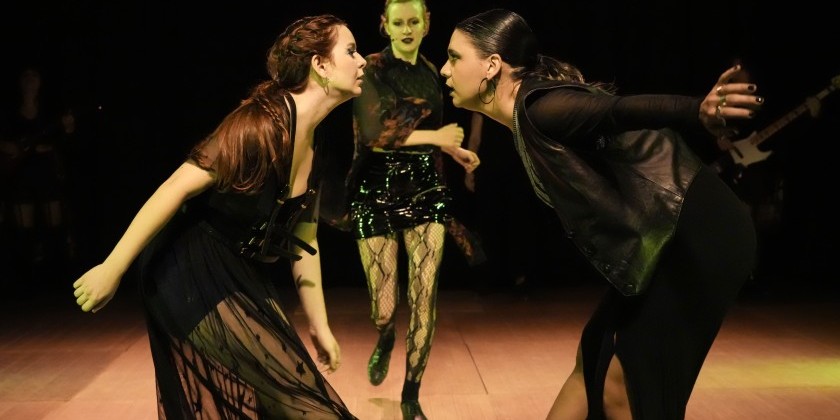AUDIENCE REVIEW: MARK DeGARMO DANCE VIRTUAL SALON PERFORMANCE SERIES 2020-21 CLOSING CELEBRATION THURSDAY JUNE 3, 2021

Company:
Mark DeGarmo Dance presents choreographers Anabella Lenzu, Seema Viswanath, and Barbara Mahler
Performance Date:
June 3, 2021
Freeform Review:
The Mark DeGarmo Salon Performance Series, run out of the company’s Studio Theater 310 at the Clemente Soto Vélez Cultural and Educational Center on Manhattan, New York’s Lower East Side since 2010, went virtual in 2020. Conditions of the 2021-22 season are being worked out.
The final program of 2020-21 on June 3, 2021 opened with Argentine-born choreographer Anabella Lenzu’s “Out of the Folds of Women”. related to Walt Whitman’s poem “Unfolded out of the folds of the woman Man comes unfolded, And is always to come unfolded”. Lenzu uses a splitscreen, on my screen the left one about 4” x 4” and the right one about 2”W x 4”H. Pleasing and disconcerting, the challenge to adjust the brain/eye/dance-experience to these potentially clashing dimensions. On the right screen, a full-bodied woman of indeterminate age wafts into, against, around, and through, white gauzy fabrics. (Both films are black and white.) The videography intentionally scrambles the signal so the figure and the fabrics are always shape-shifting, fantasmagorical. On the left, a woman - whether playfully or seriously is hard to know - manipulates a clear glass pitcher, then a plate of glass, distorting her vision, her eyes, how she views us as well as how we view her. This is a duet of two Lenzus - one with clear limits yet still an ever-evolving, distorted view of life, and one, amorphously flowing through life. Videography, editing, and music composition were by Lenzu’s husband Todd Carroll. She said there were struggles in coordinating their visions, but since they sleep together, the piece was created through osmosis.
Seema Viswanath of North Carolina presented Dvimukhi, also a solo that was a duet. “Dvimukhi” means “Two Faces”. Viswanath presented the North Indian classical dance form kathak on the right side of a wood-floored black box studio, about 10’W x 15’D. She presented the South Indian dance form bharatanatyam on the left. We were told that the difference between the two forms is largely in their use of facial expression and the hands, and that both are about storytelling. Viswanath allowed the two dance forms to have a conversation, almost like sisters across a room, sometimes crossing over, sometimes egging one another on: “Now YOU go!” “Now YOU go!”. Viswanath told us this kind of out-of-the-box thinking about mingling the two forms would be discouraged by traditional teachers. To me, it was a joy to see the two forms harmonizing. Viswanath ends the piece upstage center, facing downstage, her right and left, north and south, kathak and bharatanatyam hands, communicating, questingly, with each other, in the stereotypical western stage gesture of “Hmm, I wonder what to do NOW!”
Barbara Mahler’s “This is how it haPPened”, ALSO a solo that is a duet - was the evening curated this way? - is danced by Mahler alone in a loose sleeveless sheer top and loose black and white striped floating pants. She’s in front of a wall of mirrors, interrupted by a series of thick black velvet curtains pulled together in an X shape. Her bio says she’s been dancing for 35 years and she says after the dance “I’m not getting any younger.” She’s SO silky and fluid in her often languorous movement explorations. I think “She’s been doing this a LONG time. No! She’s been FEELING this a long time!” Two of Mahler’s students, one apparently 75ish, the other maybe 60ish, tuned in from Santiago, Chile. Mahler also cites recent work in Taiwan, Berlin, London, and Queens. She has a considerable amount of experience and sensitivity to contribute to global dance. It was encouraging to me as a newly septuagenarian former dancer to see Mahler’s tenacious moving, finding, exploring, and feeling.
The audience who tuned in from Mexico, Chile, North Carolina, Massachusetts, Queens, and who knows where else reveal a fascinating positive outgrowth of COVID. Indian dance students in their teens or early twenties, an Indian classical dance master perhaps in her late 30s-early 40s, a 40-something Italian/Argentine/American, a “senior” practitioner, could all communicate among themselves and with this audience. Curator/moderator Mark DeGarmoutilized a “facilitated audience response” to get the whole audience involved and to help the choreographers clarify their vision for the piece just presented. The audience says what they felt and what they saw - only positive comments; this is a curated series after all, so the artists have already been accepted into the showcase for a reason. NOT what they wanted to see or didn’t like. No one rebuts or corrects. Then the choreographer asks questions of the audience - where the piece might go next, how its message might be clearer, to specifics like from Mahler about any tips where a senior dancer might find opportunities. Or from an isolated young Ugandan choreographer in an earlier salon who begged for help, contacts, advice from anywhere on breaking out beyond his poor remote district of Uganda.
This kindness and generosity and happiness across art forms, nationalities, ages, educational levels, and other potential barriers to cultural and educational exchange were palpable. These feelings were not virtual, but real.





